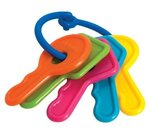Wanted to thank everyone in the forum for the solid information here and the detailed video review, which convinced me to buy my Dash this past Saturday. Me: mid-50s, 220 lbs and out of shape, my last bike purchase was a 90's MTB. Probably a perfect ebike candidate, as I have a short 5.5 mile RT commute but there is a 3/4 mile long, 9% grade hill to climb along the way.
Wondering if I the Dash could get me up that hill was my biggest concern before buying, and I'm pleased to say that the Dash powered up it 3X on its first charge -- I went 18 miles with 2 bars still showing before deciding to recharge tonight for the first time. The hill is taxing, though, even pedaling like crazy going up that hill at PAS4 I lost a bar each climb. The rest of the ride on the flats at PAS1 the meter didn't even move, so my range may be a worst case example. Didn't want to temp fate and try for a fourth run until I have a better handle on what hillclimb range is really left with 2 bars.
The frame fit information here was also reassuring -- although I bought the bike at Ebikes of New England and was able to try it out in person, if you can't the Medium fit my 5'10" 32" inseam perfectly.
Wondering if I the Dash could get me up that hill was my biggest concern before buying, and I'm pleased to say that the Dash powered up it 3X on its first charge -- I went 18 miles with 2 bars still showing before deciding to recharge tonight for the first time. The hill is taxing, though, even pedaling like crazy going up that hill at PAS4 I lost a bar each climb. The rest of the ride on the flats at PAS1 the meter didn't even move, so my range may be a worst case example. Didn't want to temp fate and try for a fourth run until I have a better handle on what hillclimb range is really left with 2 bars.
The frame fit information here was also reassuring -- although I bought the bike at Ebikes of New England and was able to try it out in person, if you can't the Medium fit my 5'10" 32" inseam perfectly.
